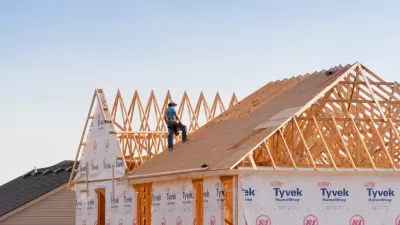A Los Angeles City Councilmember discusses his instructive quest to cobble together funding for the revitalization of his district after the termination of community redevelopment agencies.
[Updated 1/4/2016. This post was updated with a corrected link.] The "financially depressed" San Fernando Valley community of Reseda stood to receive $60-70 million worth of potential projects before the California Redevelopment Agency was dissolved in 2011.
"I didn’t want us to completely lose all that," says L.A. City Councilmember Bob Blumenfield, who represents Reseda.
Going ahead with revitalization plans would mean finding new sources of funding, and moving quickly to capture remaining funds and opportunities left behind by the CRA.
"Council offices, even in the pre-CRA world, were and continue to be very influential in the planning processes in their district," he says. But post-CRAs, they may be required, in some cases, to identify unlikely sources of funding.
First, he set about gaining city control over CRA properties so that they could continue to be developed. That involved some wrangling with the governor, who finally settled on a process that requires approval from multiple oversight boards.
There's also the question of nearly $90 million in bonds issued, but not spent, before the CRA was disbanded. Those monies are effectively suspended, unattached to a spending authority.
"Those bonds were let prior to the day that the bill cut off the CRAs," Blumenfield explains. “They were in the pipeline, so what happens to that money?”
That question is still not fully resolved. In the meantime, cities are becoming more creative in their searches for funding and partners.
In some cases, officials can identify funding, then use those opportunities as inspiration when identifying projects. Looking to Prop K, Blumenfield’s team found that money had been earmarked for a skating rink that was never completed. Now, he’s incorporated a “world-class facility” into his plans to bring growth to the area.
In the post-CRA era, Blumenfield explains, cities have to be resourceful:
"There’s overall financing like EIFDs; there’s project-specific financing that you just have to be opportunistic about; and there’s park financing, which you have to take advantage of and cobble things together."
This is Part II of a two-part interview with Councilmember Blumenfield in The Planning Report.
FULL STORY: Metro’s Joint Development Goal: Transit Oriented Communities

Alabama: Trump Terminates Settlements for Black Communities Harmed By Raw Sewage
Trump deemed the landmark civil rights agreement “illegal DEI and environmental justice policy.”

Study: Maui’s Plan to Convert Vacation Rentals to Long-Term Housing Could Cause Nearly $1 Billion Economic Loss
The plan would reduce visitor accommodation by 25% resulting in 1,900 jobs lost.

Planetizen Federal Action Tracker
A weekly monitor of how Trump’s orders and actions are impacting planners and planning in America.

Wind Energy on the Rise Despite Federal Policy Reversal
The Trump administration is revoking federal support for renewable energy, but demand for new projects continues unabated.

Passengers Flock to Caltrain After Electrification
The new electric trains are running faster and more reliably, leading to strong ridership growth on the Bay Area rail system.

Texas Churches Rally Behind ‘Yes in God’s Back Yard’ Legislation
Religious leaders want the state to reduce zoning regulations to streamline leasing church-owned land to housing developers.
Urban Design for Planners 1: Software Tools
This six-course series explores essential urban design concepts using open source software and equips planners with the tools they need to participate fully in the urban design process.
Planning for Universal Design
Learn the tools for implementing Universal Design in planning regulations.
Caltrans
Smith Gee Studio
Institute for Housing and Urban Development Studies (IHS)
City of Grandview
Harvard GSD Executive Education
Toledo-Lucas County Plan Commissions
Salt Lake City
NYU Wagner Graduate School of Public Service




























